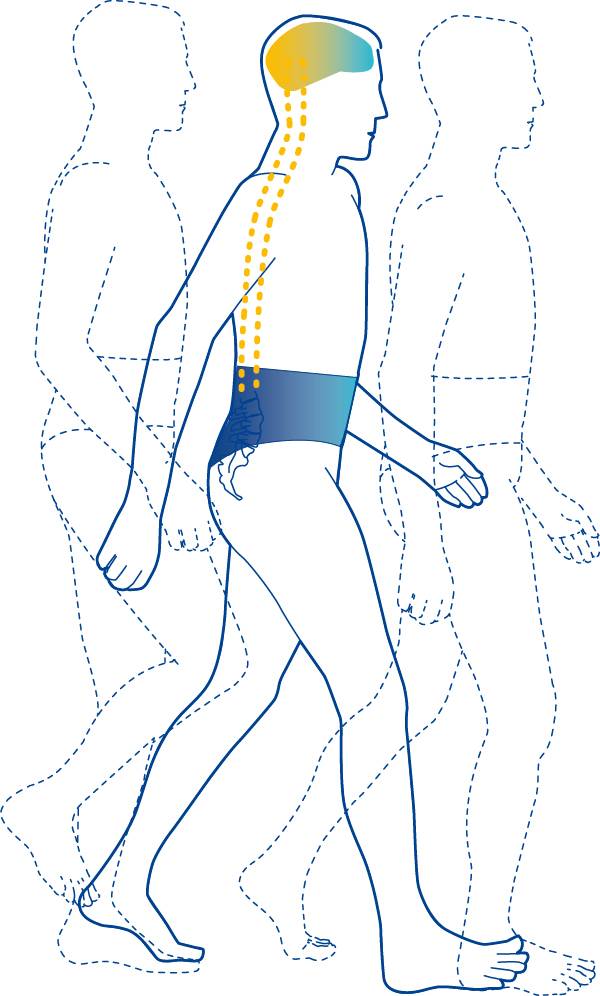Pain, whether in the back, the joints, or the head, can be incredibly frustrating and debilitating. Acute pain can last anywhere from a few hours to a few days, and chronic pain can last for months or even years.
Pain medication is a common first-level treatment approach to manage pain, especially when concerning the back. While pain medication can help relieve short-term acute pain it is important to be aware of possible side effects and explore other treatment options for back pain.

Pain Medication: Treatment measure with side effects
Over-the-counter pain medication and topical treatments such as warming creams and pads, are a typical first line of treatment when suffering from back pain.
Pain medication, when used as prescribed, can help offer immediate relief, especially in the case of very severe pain. It can help you regain mobility to continue with your daily life. In addition, they can prevent you from adopting an incorrect posture.
It is important to keep in mind however that, pain medication often only works to treat the immediate symptoms, but not the underlying cause.
It is also important to remember that this immediate pain relief from medication can come with side effects.

Like any medication, painkillers are an intervention in your body. And this intervention can have various side effects on your health.
If you are using pain medications as a first line of treatment it is important to ensure that you are using them safely. It is important to consult your doctor and use them exactly as prescribed. Depending on the duration and dosage of pain medication, side effects such as stomach problems including, indigestion, ulcers, and liver and kidney damage can occur. High dosage and prolonged use can increase the chance of negative side effects and addiction.
Pain medication can also give a false sense of security: The fact that the pain has temporarily disappeared doesn’t mean your back has fully recovered. Prescription and over-the-counter drugs aren’t a permanent solution to relieving back pain – a comprehensive treatment plan is necessary.
Braces and orthoses for back pain
The good news is that painkillers aren't the only way to treat back pain. Depending on the situation and symptoms, other medical products are also effective in treating pain, such as braces and orthoses. Your physician can recommend an orthopedic race or orthoses to use in conjunction with other therapy options.
Bauerfeind offers a wide portfolio of back products for an array of conditions that can help you relieve pain, restore motion, and aid in your overall back therapy!
84%
of those using back braces/orthoses suffer from less pain, thanks to their brace¹
52 days
with less back pain during the year, thanks to a Bauerfeind back brace²
65%
of those using back braces/orthoses can reduce the consumption of pain medication¹

Long Term Chronic Pain Management
A comprehensive pain management plan is important in order to treat the immediate symptoms of pain but also address the underlying conditions and triggers. A holistic approach to treating back pain can help you feel better not only physically but as well.
It is important to speak with your physician before starting any pain management treatment plan. They can help determine the best course of action for your indication.

Chronic pain management plans may include:
- Lifestyle changes including exercise and diet
- Back braces and orthoses
- Stress management
- Yoga and relaxation therapy
- Physical therapy
- Acupuncture
- Massage
In more severe cases,
- Injections
- Surgery
Although it may not be possible to find complete relief from chronic pain, many people with a comprehensive pain management plan can learn to respond to pain differently and improve their overall quality of life.

Bauerfeind Back Therapy
Anti-Pain Therapy is one of five therapy modules, get to know the other modules here!

Back Therapy

Back Guide

Exercise Therapy

Stress Relief

Back Care
¹According to experts’ recommendations specified in the National Treatment Guidelines for Non-specific Low Back Pain
²Valle Jones, et al. Current Medical Research and Opinion, (1992) Vol.12, No.9, S. 604-613


